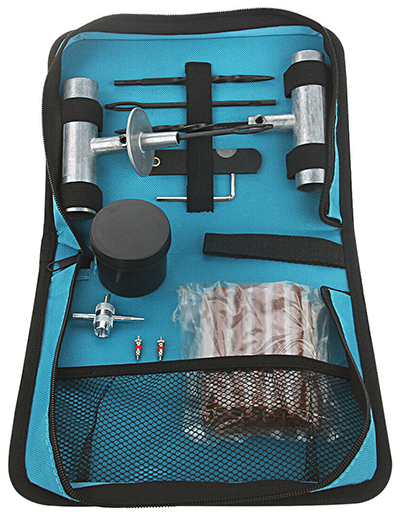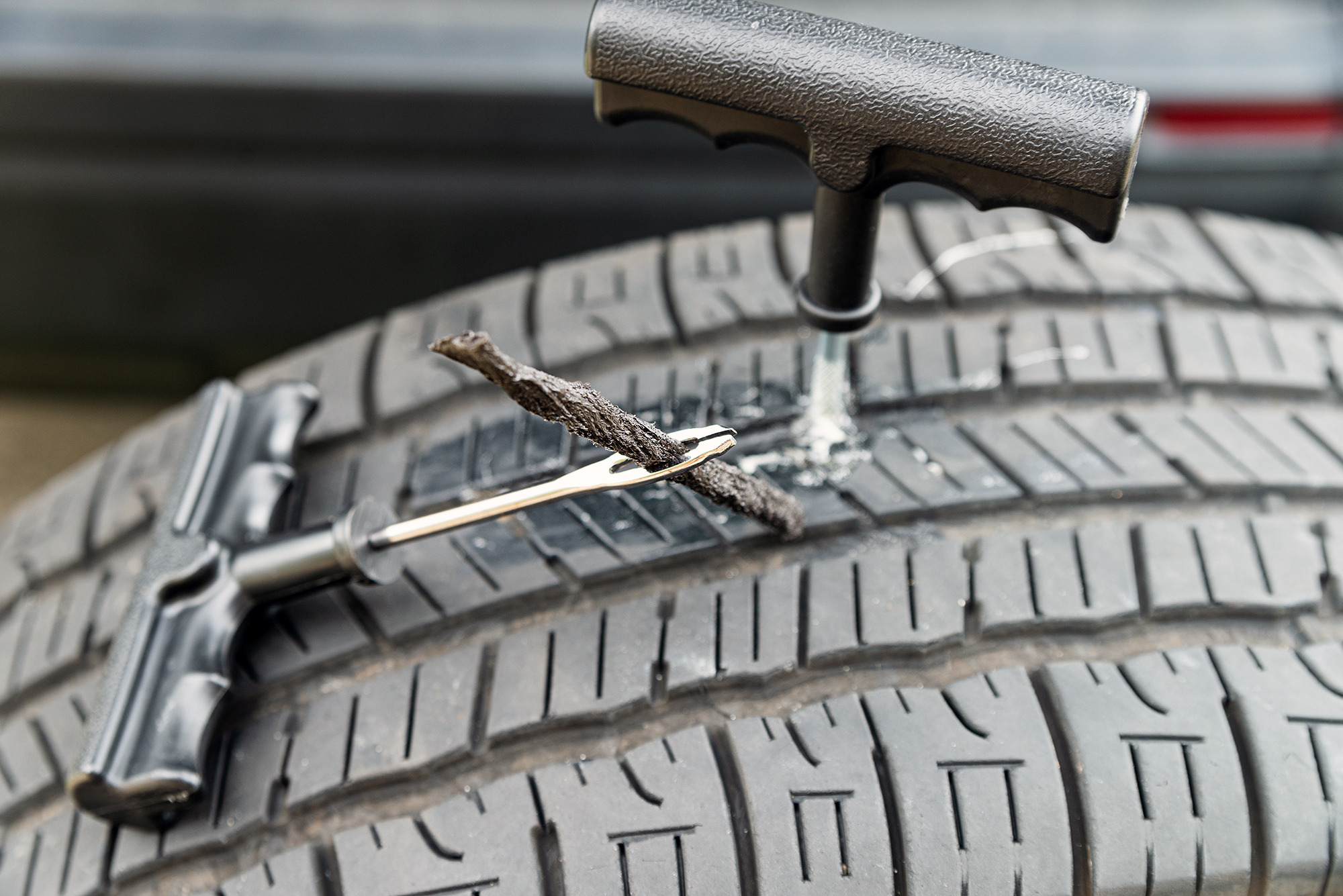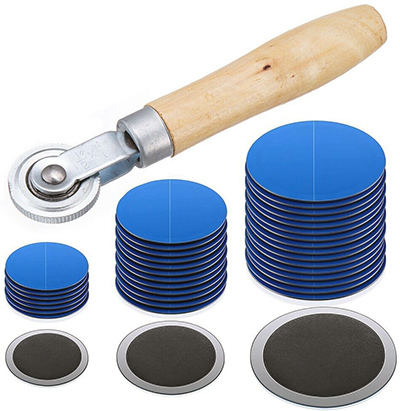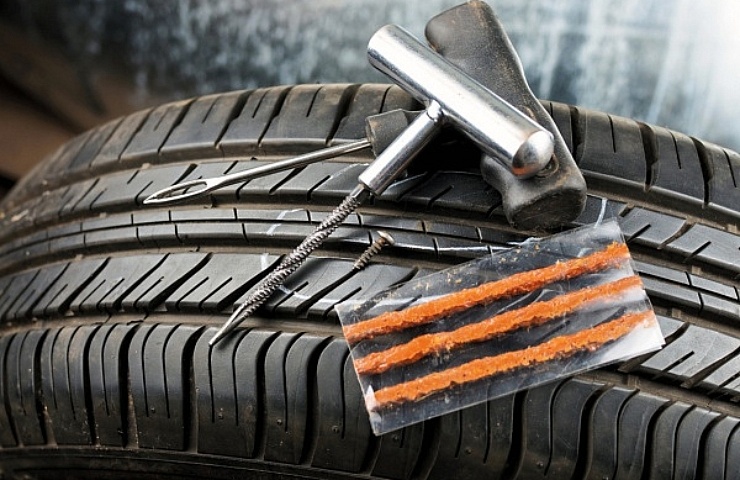Contents
Critically, filling a hole with a sealing plug is only possible when the hole is in the tread, not in the sidewall. Holes in or close to the sidewall should never be plugged.
Shop now for a tire plug repair kit
Preparing the Tire for Plugging

A tire plug kit has everything you need to get the job done.
First, purchase a tire repair kit, which typically costs around $20. The elements of a typical tire-plugging kit may include these items:
- Plugs (generally made of cork and gooey adhesive)
- T-handle plug insertion tool (sometimes more than one)
- Lubricant/tire cement
- Pliers
- Tire pressure gauge
- Knife
- Manual
- Portable storage case
Next, follow these steps to prepare the tire for plugging.
- Remove the tire and wheel from the car.
- With the tire still on the rim, fill it with air.
- While the air is slowly leaking out, spray a mixture of 20 percent soap and 80 percent water around the tread to locate the leak.
- If present, remove the nail by leveraging it up with a screwdriver, then pulling it out with pliers.
- Use a reaming tool in a twisting motion to penetrate the steel belts. This will widen the hole and get it ready for plugging.
How to Plug the Tire

Don’t twist the plug as you push it in, just go straight down.
Follow the instructions in the kit. Here’s what you will likely find:
- Thread the tire cement-coated plug strip through the eyelet on the plug insertion tool.
- Coat the reamed hole with cement.
- Insert the plug into the hole. Don’t twist the plug as you push it in, just go straight down and stop when there is about a ½ inch exposed.
- Remove the tool by twisting it 90 degrees, and trim the plug with wire cutters.
- Inflate the tire with an air compressor. Use the tire pressure gauge to ensure the correct air pressure.
- With the soap and water mixture, test to make sure the leak is sealed.
- Wait a few minutes for the cement to dry before driving on the tire.
If you take the car to a shop, it will cost $25 to $30 to plug the tire. Some places will plug the tire for free if it was originally purchased there. In most cases, the work can be done while you wait.
Set It and Forget It?
Unfortunately, plugging a tire is not a case of simply doing the job and forgetting about it. A plug has a finite life, though experts differ on exactly how long that is. Manufacturers claim a plug can last up to 10 years or 25,000 miles, but it’s best to see it as a temporary measure.

Tire patches are an alternative to plugs.
Eventually—especially if your tire cement is not high quality—the plug can dry out and leak. You can let it go for a while, perhaps until you are ready to purchase a set of new tires.
Keep in mind that you shouldn’t plug a tire more than once, especially if the new plug is close to the first one. It’s too much of a gamble. Also, plugs on front tires are more of a concern because a rapid flat could cause a loss of steering control.
The rules for tire plugging aren’t as set as the guidelines for space-saver spares. Those should only be driven about 50 miles before swapping out for a regular tire. With a plugged tire, it’s best to stick to the speed limit and avoid any performance-car heroics.
Shop now for car and truck tiresAn alternative to tire plugging is patching, an option also available for holes of a quarter-inch in diameter or smaller. Tire patches (pieces of rubber held in place by cement) work better for holes that aren’t straight or are close to (but not at) the sidewall. The kit might include round patches, cement, a roller, a valve stem core remover, and more. Patches are effective, but are not an emergency roadside repair. Putting them on is a job for a professional.





